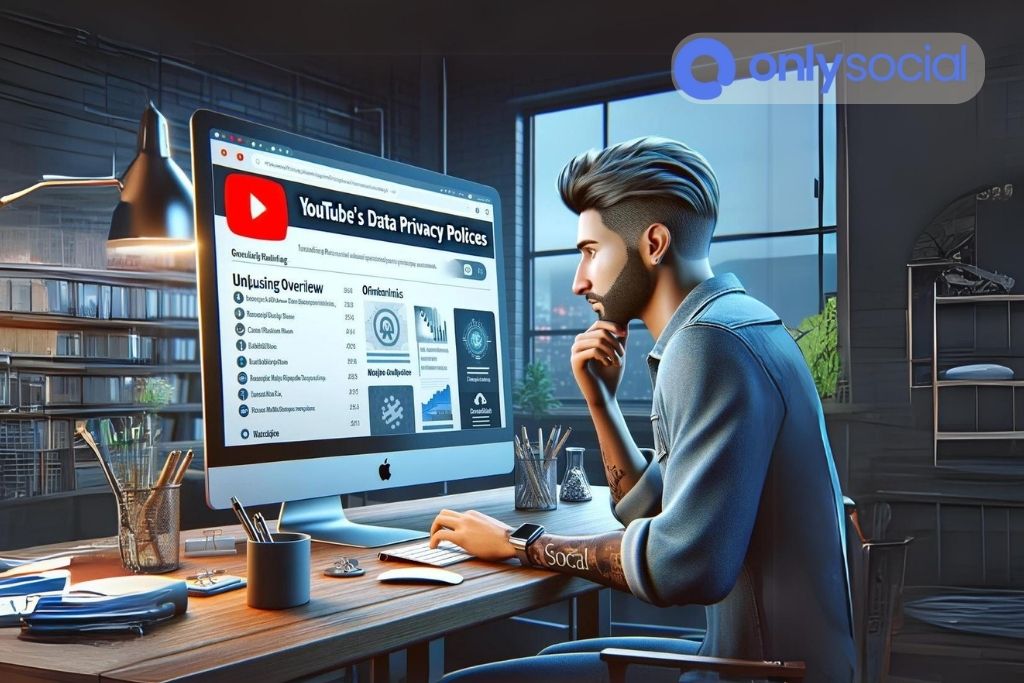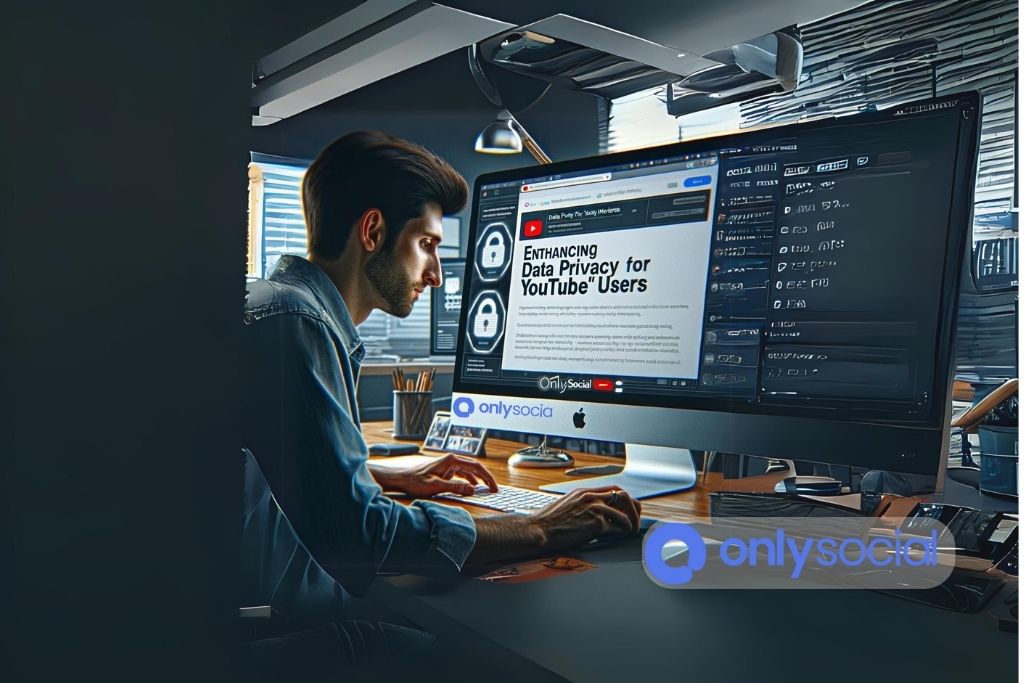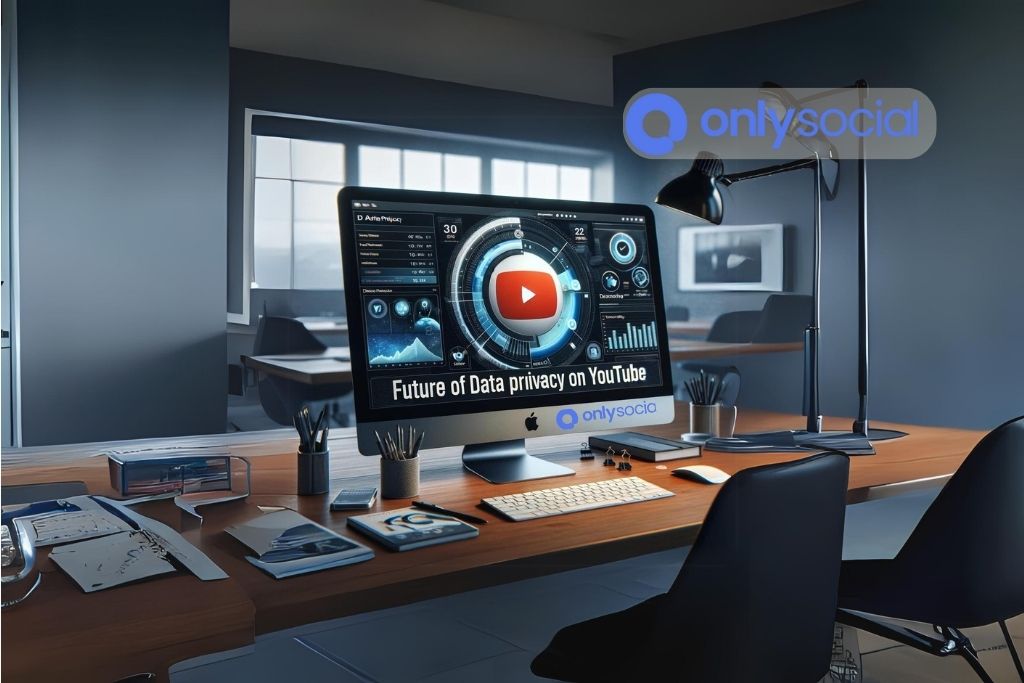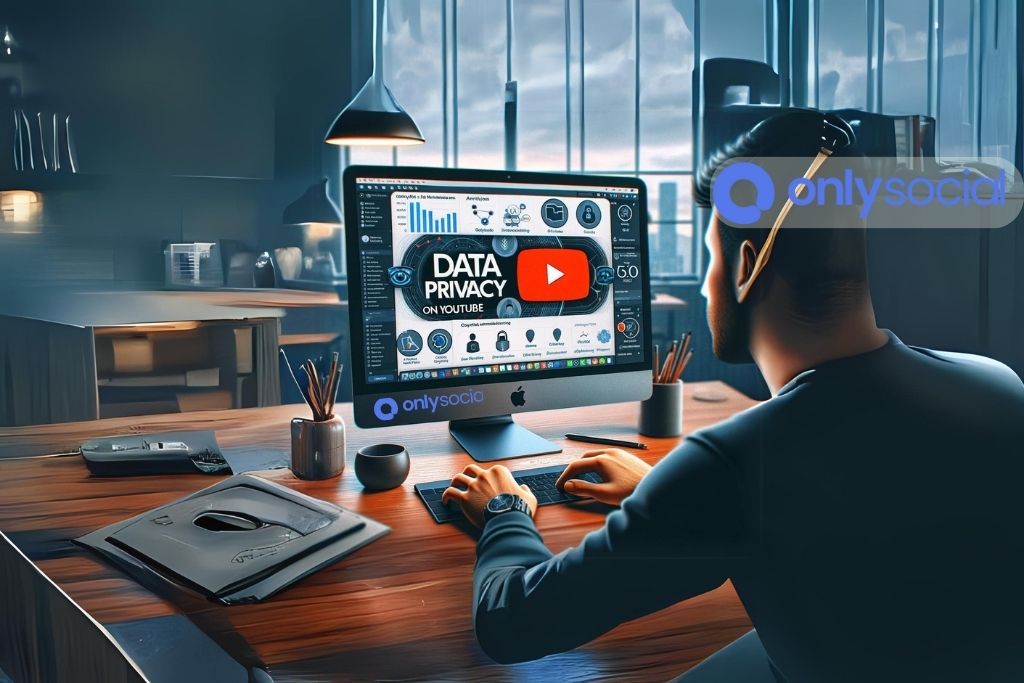In today’s digital landscape, YouTube stands as a colossus, hosting billions of videos and serving as a primary source of entertainment, education, and information for people worldwide. As users navigate through endless streams of content, upload videos, and interact with other users, the issue of data privacy on YouTube emerges as a critical concern. Data privacy, or the way personal information is managed and protected online, is especially pertinent on platforms like YouTube, where user interactions and preferences are constantly tracked and analyzed.
This article focuses on unraveling the complexities of data privacy on YouTube. It delves into the intricacies of how data is collected, used, and protected on the platform, offering a comprehensive overview that aims to shed light on the practices that affect millions of users globally. From understanding the scope of information collected by YouTube to exploring the platform’s data privacy policies, and offering guidance on how users can safeguard their privacy, this article serves as an essential guide for anyone looking to navigate the digital world more securely.
To explore data privacy concerns, examine how YouTube manages user data, and provide tips for enhancing personal data privacy, this piece is crafted to empower readers with knowledge and tools to take control of their digital footprint on YouTube. As we delve deeper into the nuances of data privacy on YouTube, it’s crucial to recognize the importance of staying informed and proactive in protecting one’s personal information in the vast digital expanse of the internet.
Table of Contents
Understanding Data Privacy on YouTube

What is Data Privacy?
Data privacy, especially in the context of online platforms like YouTube, refers to the right of individuals to control their personal information and how it is used. This encompasses the protection of personal data from unauthorized access, misuse, or disclosure. In the digital age, where vast amounts of personal information are shared online, understanding and ensuring data privacy is crucial for safeguarding individuals’ rights and freedoms.
How YouTube Collects Data
YouTube, as a major video-sharing platform, collects a wide range of data from its users to improve user experience, provide personalized content, and display targeted advertisements. The types of data collected can be broadly categorized as follows:
| Type of Data | Description |
|---|---|
| Account Information | This includes data provided directly by users when they create an account, such as name, email address, and date of birth. |
| Watch History and Search Queries | YouTube tracks the videos you watch and the terms you search for on the platform to recommend content. |
| Device Information | Information about the device used to access YouTube, including the hardware model, operating system, and mobile network information. |
| Location Data | YouTube may use IP addresses, GPS, and other sensors to determine your precise or approximate location. |
| Cookies and Similar Technologies | YouTube uses cookies to collect data about your viewing habits and preferences, which helps in tailoring the user experience and advertisements. |
These methods of data collection enable YouTube to create a personalized viewing experience but also raise questions about user privacy and data protection.
In the context of “Data Privacy on YouTube,” users need to be aware of how their data is collected, the purposes for which it is used, and the controls available to manage their privacy settings on the platform. Understanding these aspects is the first step towards safeguarding one’s privacy while enjoying the content YouTube has to offer.
YouTube’s Data Privacy Policies

Understanding YouTube’s approach to data privacy is crucial for users who seek to protect their personal information. This section delves into the specifics of YouTube’s data privacy policies, highlighting how the platform collects, uses, and protects user data.
Overview of YouTube’s Data Privacy Policy
- Policy Highlights:
- Data Collection: YouTube collects various types of user data, including but not limited to, watch history, search queries, uploaded content, comments, and location information.
- Data Usage: The data collected is used to improve user experience, provide personalized content recommendations, and targeted advertisements, and for analytical purposes.
- User Control: YouTube provides users with tools and settings to control their privacy, including options to delete watch history, manage ad settings, and more.
Changes and Updates in Data Privacy Policies
- Recent Updates:
- An outline of significant changes to YouTube’s data privacy policy in response to evolving global privacy standards and regulations.
- Discussion on the introduction of new user control features and how they impact user experience and data privacy.
This section aims to provide a thorough understanding of [Data Privacy on YouTube], focusing on the platform’s current policies, recent changes, and their implications for users. By familiarizing themselves with YouTube’s privacy settings and understanding the platform’s use of data, users can take proactive steps to safeguard their privacy while enjoying the content YouTube offers.
Data Privacy Concerns on YouTube
Data privacy on YouTube is a significant concern for many users. The platform’s vast reach and its role as a repository for a wide range of content make it a focal point for discussions about digital privacy. This section delves into common concerns and highlights specific issues that have arisen over time.
A. Common Concerns Among Users
- Tracking and Profiling
- Description: Users are worried about the extent to which YouTube tracks their viewing habits, search history, and even location data to create detailed user profiles.
- Impact: This profiling can lead to targeted advertising that feels intrusive and raises questions about the boundary between personalized content and privacy invasion.
- Data Sharing with Third Parties
- Description: There’s apprehension about the information YouTube shares with advertisers, partners, and other entities.
- Impact: The potential misuse of personal data by third parties without direct consent from users is a major concern, leading to calls for more transparency and control over data sharing.
- Use of Data for AI Algorithms
- Description: YouTube uses data to train its algorithms for recommendations and content moderation.
- Impact: Concerns arise over the ethical use of data, consent, and how algorithmic decisions affect what content is promoted or suppressed, potentially influencing user beliefs and behaviors.
- Children’s Privacy
- Description: With a significant number of young viewers, data privacy on YouTube for children is particularly sensitive.
- Impact: The platform has faced scrutiny over its collection and use of data from children under the age of 13, leading to legal challenges and calls for stricter protections.
B. Case Studies: Data Privacy Issues on YouTube
| Case Study | Description | Outcome |
|---|---|---|
| COPPA Violation Accusations | YouTube was accused of violating the Children’s Online Privacy Protection Act (COPPA) by collecting data from children under 13 without parental consent. | This resulted in a landmark settlement and changes to how children’s content is treated on the platform. |
| User Tracking Concerns | Investigations and reports have highlighted how YouTube tracks user data across the web, raising questions about consent and the extent of data collection. | Ongoing debates and calls for more user-friendly privacy controls and transparency in data usage. |
| Data Sharing with Advertisers | Concerns have been raised about the nature and extent of data shared with advertisers, including sensitive information that could be used to target vulnerable user groups. | Push for clearer policies and options for users to control the sharing of their data. |
These case studies and concerns underscore the complexities of managing data privacy on YouTube. They highlight the need for a balance between personalized content delivery and safeguarding user privacy. The platform’s efforts to address these issues are ongoing, with updates to policies and tools aimed at enhancing user control over their data.
Enhancing Data Privacy for YouTube Users

Ensuring data privacy on YouTube is crucial for protecting users’ information and enhancing their viewing experience. This section outlines practical steps and best practices for users looking to safeguard their data privacy while enjoying content on YouTube.
YouTube’s Tools and Settings for Privacy
| Tool/Setting | Description | Steps to Use |
|---|---|---|
| Pause Watch History | Prevents YouTube from saving your watch history. | Go to YouTube > Settings > History & privacy > Pause watch history. |
| Pause Search History | Stops YouTube from keeping a record of your searches. | Go to YouTube > Settings > History & privacy > Pause search history. |
| Manage Activity Controls | Allows you to review and delete your activity on YouTube. | Visit Google My Activity > Activity controls > YouTube History. |
| Ad Settings | Lets you control the types of ads you see based on your activity. | Go to Google Ad Settings > Ad personalization > Turn off or adjust preferences. |
| Restricted Mode | Filters out potentially mature content you may not want to see. | Go to YouTube > Settings > General > Restricted Mode. |
| Incognito Mode | Allows browsing YouTube without saving your search and viewing history. | Open the YouTube app > Profile picture > Turn on Incognito. |
Best Practices for Protecting Your Data on YouTube
- Be Mindful of Shared Information: Avoid sharing sensitive personal information in comments, live chats, or on your profile.
- Regularly Review and Clear History: Periodically check and clear your watch and search history on YouTube to limit data accumulation.
- Adjust Privacy Settings: Regularly review your account’s privacy settings to ensure they align with your data privacy preferences on YouTube.
- Use Incognito Mode: For sessions where you don’t want your activity to be saved, use YouTube’s Incognito mode.
- Educate Yourself on Privacy Features: Stay informed about YouTube’s privacy features and how to use them effectively.
- Secure Your Account: Use a strong password and enable two-factor authentication to protect your YouTube account.
- Be Cautious with Third-Party Apps: When connecting third-party apps to your YouTube account, review the permissions you’re granting and revoke those that are unnecessary.
By utilizing YouTube’s privacy tools and adhering to these best practices, users can significantly enhance their data privacy on YouTube. These measures not only help in controlling the information YouTube collects but also empower users to have a more secure and personalized viewing experience.
The Role of Regulations in Protecting Data Privacy on YouTube
Data privacy on YouTube has become a significant concern for users, policymakers, and the platform itself. As digital content consumption continues to rise, the importance of safeguarding user data against misuse is paramount. This section explores how various regulations protect data privacy on YouTube, ensuring that the platform operates transparently and respects user privacy.
General Data Protection Regulation (GDPR) and YouTube
The General Data Protection Regulation (GDPR), implemented in the European Union (EU) in 2018, marked a significant shift in the way data privacy is approached globally. YouTube, like many other digital platforms, had to adapt to comply with these stringent privacy standards.
- Impact on YouTube: GDPR requires YouTube to obtain explicit consent from users before collecting or processing their data. This has led to changes in how YouTube collects data, with more transparent disclosures and the ability for users to opt out of data collection practices.
- User Rights Under GDPR: YouTube users in the EU and EEA have specific rights under GDPR, including the right to access their data, the right to be forgotten (data deletion), and the right to data portability.
- YouTube’s Compliance Measures: To comply with GDPR, YouTube has introduced features that allow users to control their privacy settings more granely, including managing and deleting their watch and search history directly from their accounts.
Children’s Online Privacy Protection Act (COPPA) and YouTube
COPPA is a U.S. federal law designed to protect the privacy of children under the age of 13 online. YouTube’s compliance with COPPA has significant implications for the platform and its content creators.
- Impact on Content Creators: YouTube now requires content creators to classify their content as made for children or not. This classification affects how data is collected and processed for videos targeted at children, significantly limiting the data collection practices.
- Protection for Children’s Data: YouTube has implemented measures to prevent the collection of personal information from children without parental consent, aligning its operations with COPPA requirements.
California Consumer Privacy Act (CCPA) and YouTube
The CCPA provides California residents with rights over their personal information, similar to GDPR but with some distinct differences that affect how platforms like YouTube operate.
- User Rights Under CCPA: These include the right to know about the personal data collected, the right to delete personal data, and the right to opt out of the sale of personal data.
- YouTube’s Adaptations: YouTube has made adjustments to ensure that California residents can exercise their rights under CCPA, including mechanisms to request data access and deletion.
Table: Summary of Regulations and Their Impact on YouTube
| Regulation | Region | Key Impact on YouTube | User Rights |
|---|---|---|---|
| GDPR | European Union | Consent for data collection, enhanced privacy settings | Access, deletion, portability |
| COPPA | United States | Restrictions on content for children, data collection limits | Protection of children’s data |
| CCPA | California, USA | Data access and deletion rights, opt-out of data sale | Access, deletion, opt-out |
These regulations play a crucial role in shaping how YouTube manages data privacy, ensuring that the platform remains a safe space for users to consume and create content. By adhering to these laws, YouTube helps protect individual privacy rights and sets a standard for digital platforms worldwide.
Future of Data Privacy on YouTube

The future of data privacy on YouTube is a critical area of focus as the platform continues to evolve in response to technological advancements, regulatory changes, and user expectations. Here’s an in-depth exploration of what might lie ahead for data privacy on YouTube.
Upcoming Changes and Trends
- Increased Transparency
- Description: YouTube may provide users with more detailed insights into what data is collected, how it is used, and who it is shared with.
- Impact: Enhanced user trust and compliance with global data privacy regulations.
- Enhanced User Control
- Description: Expect to see more sophisticated tools that allow users to manage their privacy settings easily, including data collection preferences.
- Impact: Users gain greater control over their personal information, tailoring their YouTube experience to better suit their privacy needs.
- Regulatory Influence
- Description: New and updated data privacy laws worldwide will continue to shape how YouTube manages user data.
- Impact: YouTube will need to adapt its policies and practices to remain compliant with diverse and evolving regulations.
- Privacy by Design
- Description: YouTube might integrate data privacy considerations into the development of new features and algorithms from the ground up.
- Impact: This approach ensures that data privacy is a core aspect of YouTube’s platform and services, not an afterthought.
The Role of Technology in Enhancing Data Privacy
- Artificial Intelligence (AI) and Machine Learning
- Description: AI and machine learning technologies can be used to better detect and protect sensitive user data automatically.
- Impact: Improved automatic redaction of personal information from videos, and smarter content recommendations without compromising privacy.
- Blockchain Technology
- Description: Incorporating blockchain could offer new ways to secure user data and manage consent protocols.
- Impact: Enhanced security and transparency for data transactions, potentially allowing users to have more direct control over their data.
- Advanced Encryption Techniques
- Description: The use of stronger and more efficient encryption methods to protect user data both in transit and at rest.
- Impact: Even in the event of a data breach, encrypted data remains protected, safeguarding user privacy.
- Decentralized Data Management
- Description: Exploring decentralized platforms that give users ownership and control over their data, reducing reliance on central servers.
- Impact: A shift towards user-controlled data could dramatically alter the data privacy landscape on YouTube, providing users with unprecedented control over their information.
Focus on “Data Privacy on YouTube”
- The initiatives and technological advancements outlined above highlight YouTube’s potential path toward enhancing data privacy for its users. As these trends develop, the platform’s approach to handling personal information will likely become more transparent, user-focused, and secure. This evolution reflects the broader digital ecosystem’s ongoing commitment to respecting and protecting user privacy in an increasingly interconnected world.
BONUS
In an era where online privacy is paramount, leveraging OnlySocial for post-planning and scheduling becomes a key strategy for safeguarding your personal information. OnlySocial allows for unlimited posting across multiple social networks, enabling you to manage your digital presence efficiently and securely. With the ability to handle unlimited social profiles, it streamlines your social media strategy, minimizing the risk of data exposure. Embrace the convenience and security of OnlySocial with a commitment-free 7-day trial today.
Frequently Asked Questions
Below is a detailed section dedicated to answering the most common queries related to Data Privacy on YouTube. This FAQ aims to address concerns, provide clarity, and offer guidance on managing data privacy on the platform effectively.
| Question | Answer |
|---|---|
| What personal data does YouTube collect from its users? | YouTube collects a variety of personal data to enhance user experience, including but not limited to, watch history, search queries, location information, device information, and interaction data. This information helps YouTube personalize content, ads, and recommendations. |
| How can I control the data YouTube collects about me? | Users can manage their data privacy through various settings offered by YouTube, such as pausing watch and search history, adjusting ad preferences, and using the platform in Incognito mode. Additionally, users can access and delete their data directly from their Google account settings. |
| Are my YouTube activities shared with third parties? | YouTube may share aggregated, non-personally identifiable information with third parties. For personalized ads, data may be shared with advertisers under strict privacy conditions. Users can adjust their ad settings to limit this sharing. |
| How does YouTube ensure the protection of children’s data privacy? | YouTube complies with the Children’s Online Privacy Protection Act (COPPA) and other applicable laws to protect children’s privacy. YouTube Kids, a separate app designed for younger audiences, offers additional parental controls and privacy protections. |
| What impact do global data privacy regulations, like GDPR, have on YouTube users? | For users in regions covered by GDPR and similar regulations, YouTube provides enhanced data privacy protections, including the right to access, rectify, delete, and restrict the processing of their data. YouTube also offers transparency over data usage and control mechanisms to comply with these regulations. |
| How can I report a data privacy concern on YouTube? | Users can report privacy concerns directly through YouTube’s Help Center or by using the platform’s reporting features. For serious concerns, users may also contact their local data protection authority. |




